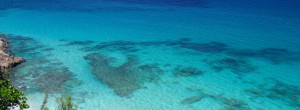As a traveler, it is important to know about the language and the culture of the countries you are visiting. But how well do you really know the world and which languages are spoken in each country? Do you know why they speak Spanish in the Dominican Republic while they speak French on the other side of the island in Haiti? And why to the Swiss speak so many languages?
Lets start with use of Spanish, Dutch, and French in the Caribbean. After Christopher Columbus discovered the new world, countries with large fleets of ships such as France, England, Spain, and the Netherlands were quick to attempt to colonize in the newly found islands. Colonization attracted new settlers from Europe who brought along with them their cultures as well as their languages.
Today, you can find Spanish as the official language spoken in the Dominican Republic, Cuba, and Puerto Rico, while French is the official language in Haiti, Guadeloupe, Martinique, St. Barthelemy and St. Martin. Although there are more islands in the Caribbean that speak English than any other language, the majority of people in the Caribbean speak Spanish due to the larger population density of the Spanish speaking countries.
The fact that English is spoken in a large part of the Caribbean is a testament to the strength of the British explorers in the 1500’s. Countries such as Anguilla, Antigua and Barbuda, the Bahamas, the British Virgin Islands, the Cayman Islands, St. Kitts, Turks and Caicos as well as a few others speak English. You will find Dutch as the official language in Aruba, Bonaire, Curacao, Saba, St. Eustatius and St. Maarten, so don’t be surprised to find a few people from the Netherlands on your visit to this part of the world.
Now it is time to return to the topic of why different languages are spoken on the relatively small island of Hispaniola (which includes Haiti and the Dominican Republic). After Columbus arrived on Hispaniola in 1492, the island was colonized by European settlers and Spain battled for control until issues with slaves and European diseases forced all the Spaniards to move close to the safe base of Santo Domingo to protect themselves from pirates. With Spanish forces removed from the extremities of the Hispaniola, the French moved in and colonized the other half of the island. Today, you will mostly find a version of French and Haitian Creole on this part of the island and Spanish on the rest.
There is also a good explanation as to why the Swiss people speak so many languages so well. But you will have to read our next blog post for the answer to that question!

